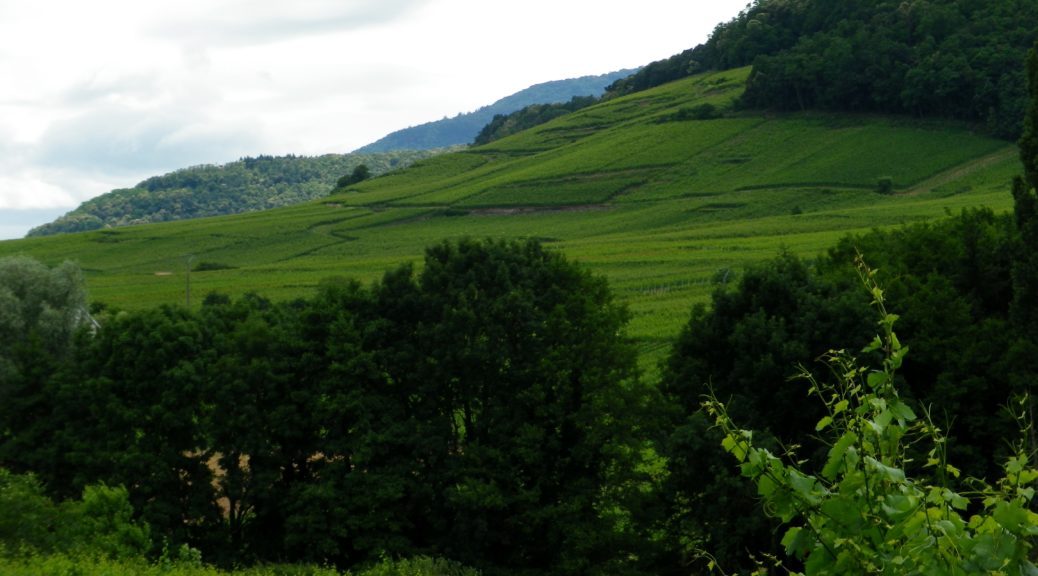Some places seem designed for vineyards, and this was one of them. Outside Guebwiller, the slopes of the foothills of the Vosges run into a small mount. Like its opposing counterpart, the Bollenberg mount itself is cloaked in vines. While the Bollenberg vineyards are well-known, more importantly, the Bollenberg itself functions as a shield for the vines on the opposite slope. Protected from eastern winds, and fully exposed to the sun, this long, albeit non-contiguous stretch of slope, has on it not one, not two, but three Grands Crus.
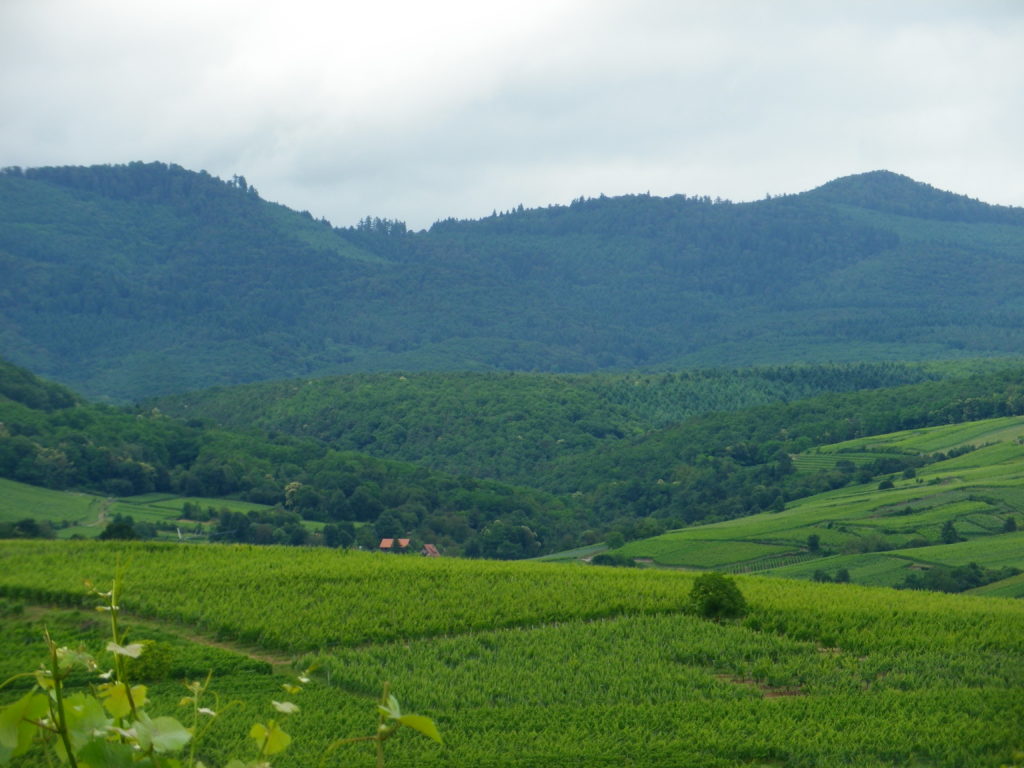
For my hike, the sun was definitely in short supply. But this was just as well, since this hike, unlike others in the area I have done, had virtually no shade along its route. Dark trees framed the outer edges of this hiking landscape, but were not plentiful on the trail. Instead, the eye took in acres and acres of vineyards, to include three famous Grands Crus: The Kessler, the Spiegel and the Pfingstberg.
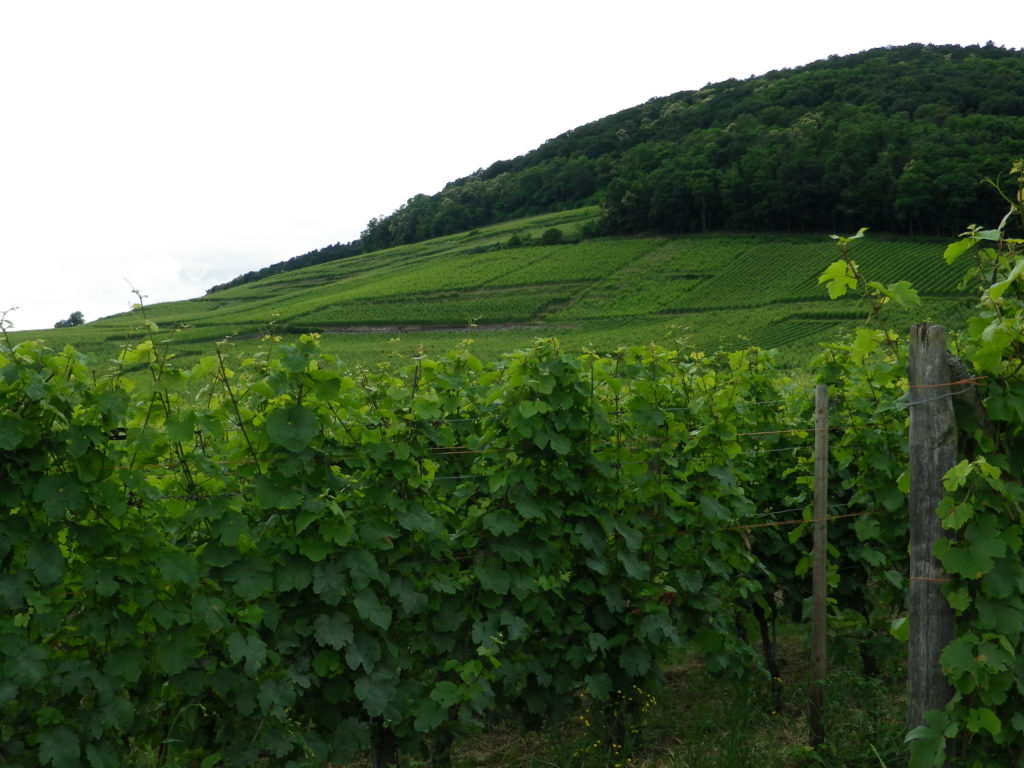
The southern-most of the three crus, the Kessler, technically belongs to Guebwiller, the largest town in the area. It was the first cru I saw as I began my hike. It lies higher, closer to the tree-line, than its neighboring cru, the Spiegel. This cru is claimed by both Bergholtz and Guebwiller, and the trail past right along it as it headed north from Bergholtz.
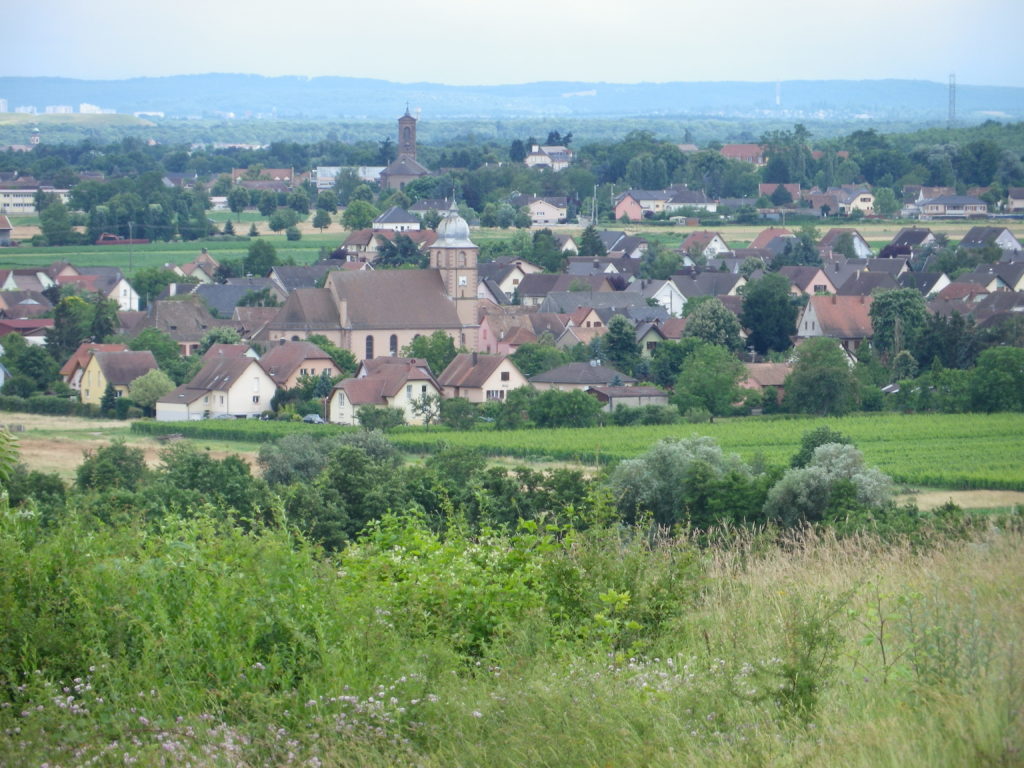
Bergholtz
The second village is Bergholtz-Zell. It is hard to tell where it ends, and Orschwihr, the third village, begins. Like all villages in this part of Alsace, this is a small, intimate place. Quiet lanes, houses closed to the outside, people at work in the fields or in the home. Wine production dominates the lives of most residents and much of the countryside.
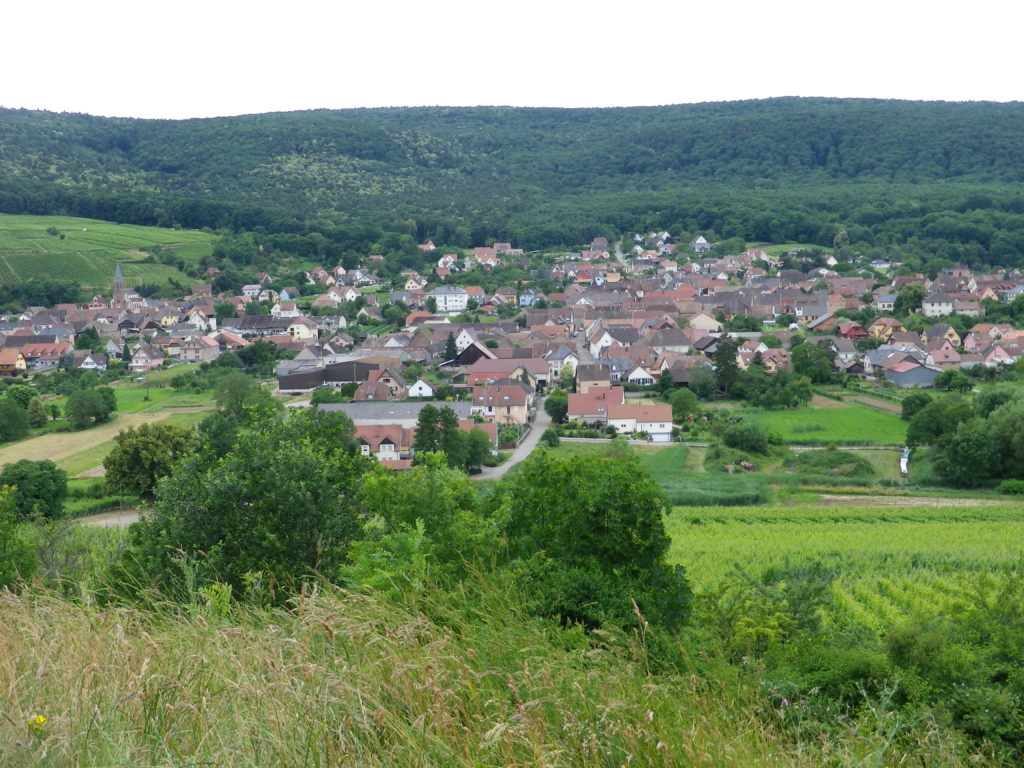
As I left Orschwihr, the slopes of the Pfingstberg grew closer. The trail does not head along the vineyards there. Instead, it keeps on the slopes of the Bollenberg. The little Quierenbach stream lies between the two, forming a small valley. The higher up the Bollenberg the trail climbs, the finer the views of the Pfingstberg.
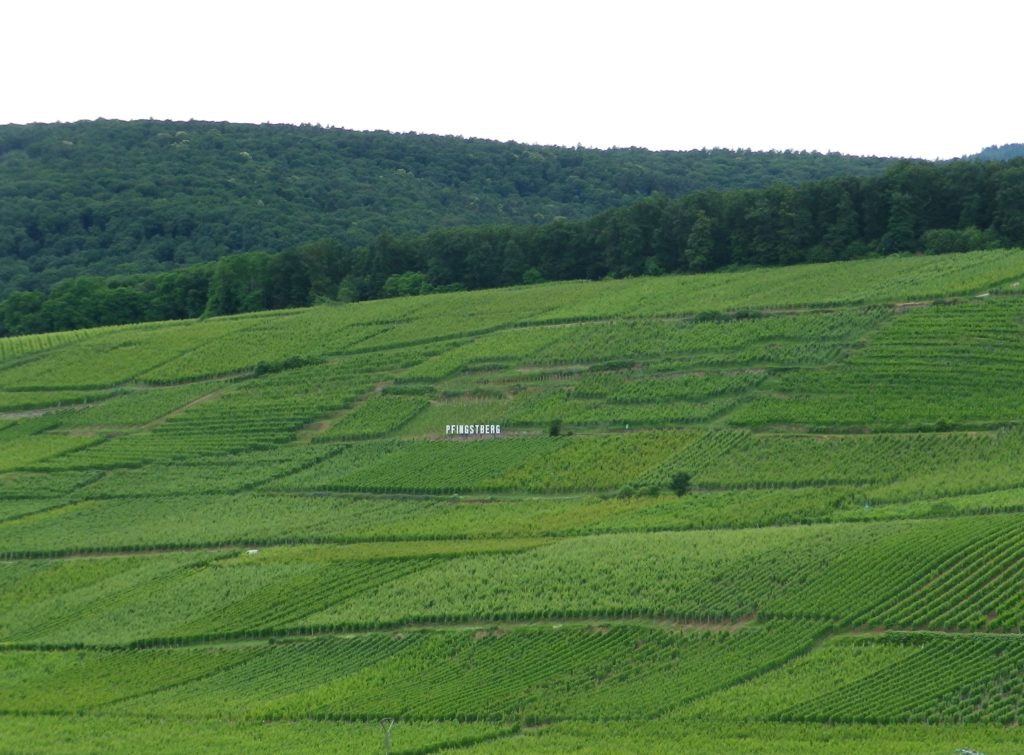
Once at the top of the Bollenberg, the views become expansive. No trees or tall structures impede them. From here the Pfingstberg dominates the view west, and the Rhine River Valley and Germany views are on the east. (While it is not possible to distinguish the vines on the hills, they are there, lying within the Baden wine district of Margraeflerland.)
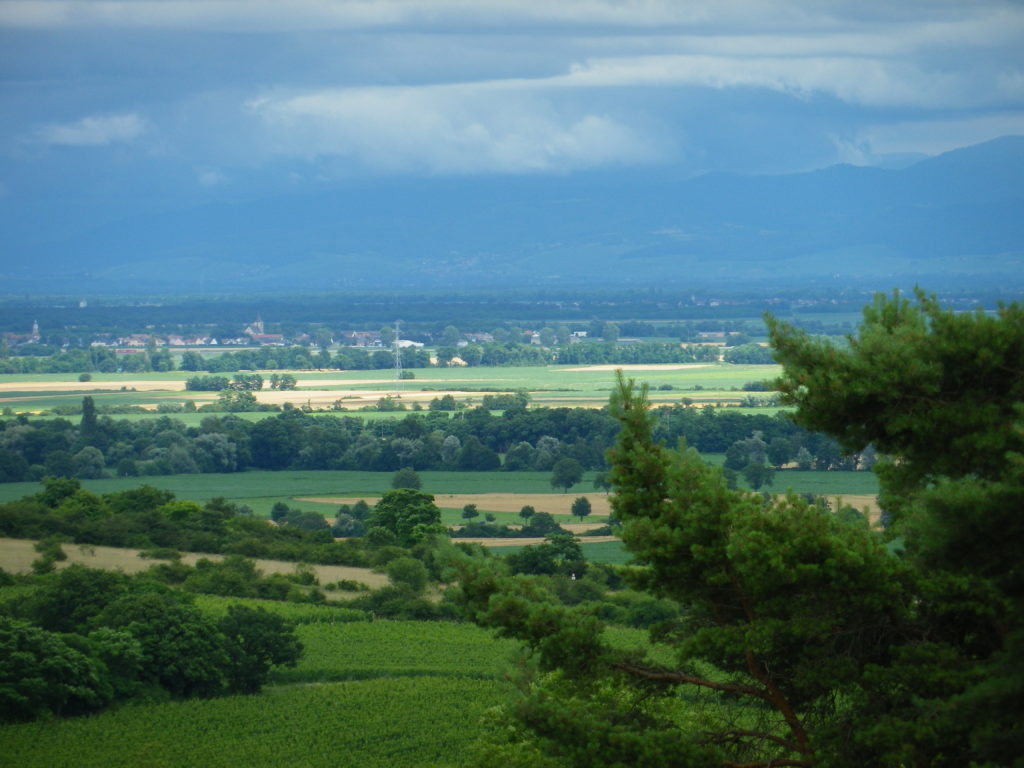
The long, leisurely descent from the top of the Bollenberg provides ample opportunity to enjoy the almost 360-degree scenery, even from the comfort of benches. The trail leads past a quaint chapel before heading over the Quierenbach, one of the many stream to crisscross this area. After a brief interlude in fields and meadows, the trail lead back into Bergholtz, and my hike was over. Three villages, three crus, quickly and easily done. But that represents a lot of good wine out there for wine lovers to sample!
